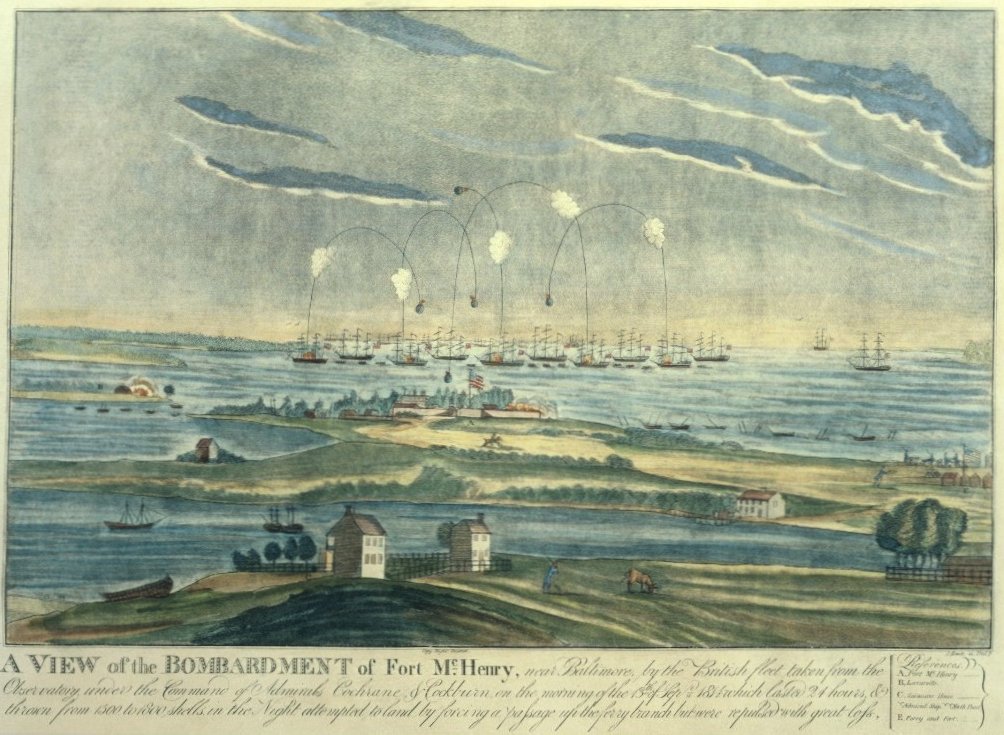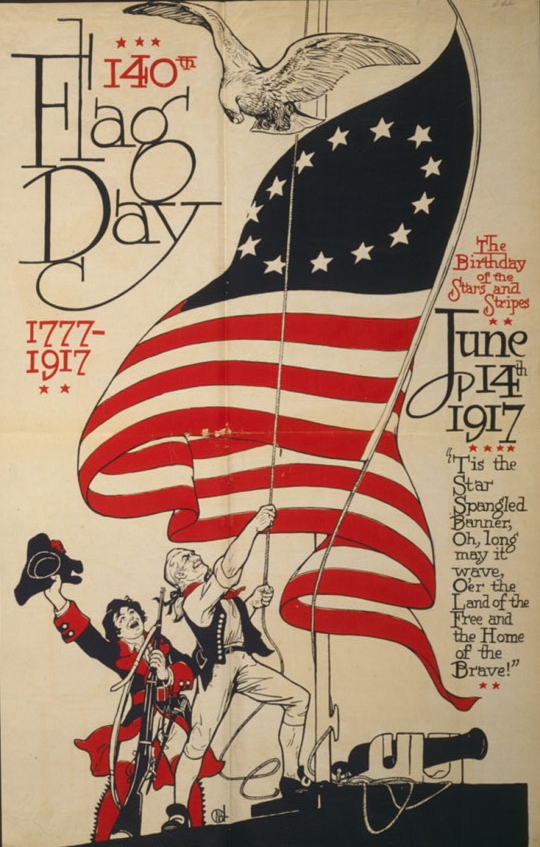Ok, this is something that came up when I graduated from the Rochester Institute of Technology. For those of you who don't know, the school has a high amount of deaf students who attend there, thanks to the National Technical Institute of the Deaf being on campus. While the national anthem performed, I was following along on the closed captioning large screen tv, and I noticed something, the question mark at the end of the song was missing.
Some of you are probably firing up Wikipedia right now to check the lyrics to see if there is, in fact, a question mark at the end. Others are probably wondering why it's such a big deal. The reason why it kind of bugs me is that people seem to not know what the anthem is about, they just kind of mindlessly sing the lyrics without really knowing what they mean. Do you want to see what I mean? I got a video.
Those astute enough to pick up on the error will note that he sings "What so proudly we hailed..." twice and leaves out "or the ramparts we watched were so gallantly streaming." Anyway, before I break down the meaning of the song, It's time for a brief history lesson.
The tune for our anthem is actually a drinking song used by a gentleman's club and was a kind of sobriety test. If you could sing the song without wavering on its notoriously difficult pitch, you were sober and could continue to drink.

Anyway, the lyrics are from a poem entitled "Defense of Fort McHenry," written in 1814 by Francis Scott Key after witnessing the bombardment of the fort during the War of 1812. Key was aboard a British warship to try to negotiate the release of American prisoners. However, during the course of negotiations, Key found out about plans to attack the fort. Not wanting Key to pass the information to the Americans, he was detained on the ship until after the battle was over.
Key sat by that night, watching through the rain, the night and trying to make sure that the flag over the fort continued to fly. Should the flag be lowered, the fort was lost. Oddly enough, the flag he was watching that night would be lowered; as the night flag was a smaller storm flag flown during storms, the "star-spangled banner" wouldn't be hoisted until the morning. So here you have Key, rooting for the Americans but forced to sit on the sidelines and hope things go his guy's way.
Finally, when dawn broke, and the Star-Spangled Banner was hoisted over the fort, Key felt compelled to write a 4 verse poem about the night. That's right. Not only is there a question mark, but there are also 3 other verses that are rarely used.
Ok, so now that you know the background of the song, I'm going to go through it, and we'll discover why that question mark should be there.
O! say can you see by the dawn's early light
What so proudly we hailed at the twilight's last gleaming.
The speaker (Key) is asking the reader/listener if they can make out the flag that had been flying over the fort right before the sunset. In other words, did the fort protecting Baltimore fall?
Whose broad stripes and bright stars through the perilous fight,
O'er the ramparts we watched were so gallantly streaming.
The speaker continues to say the item he is asking about was last seen flying over the ramparts, or defensive walls, of the fort. The last they knew, the flag was still flying over the battle taking place over the fort.
And the rockets' red glare, the bombs bursting in air,
Gave proof through the night that our flag was still there.

Library of Congress's Prints and Photographs division
under the digital ID cph.3g06262.
Throughout the night, to make sure the fort hadn't fallen, the speaker had been watching by way of rockets, which were basically fireworks launched to illuminate the night, and bombs, exploding cannonballs, to make sure the flag was still flying over the fort.
O! say does that star-spangled banner yet wave
O'er the land of the free and the home of the brave?
And here is the line that people always forget is a question. Is the flag still flying over the fort is what the speaker is asking. In other words, is the fort still protecting America?
In the three other verses, the speaker answers his own question. Yes, the Star Spangled banner still does wave over the land of the free and home of the brave. Not only does he do that, but he goes on to say that as long as free men stand to protect the country, the flag will continue to fly over it. That's why I feel it's important to remember that that last line is a question. It isn't a matter of semantics and that it just isn't right without it, but the answer is the crucial part. And without a question, there is no answer.
[Note: this originally was written for my old blog, wordsfromandy.com]
